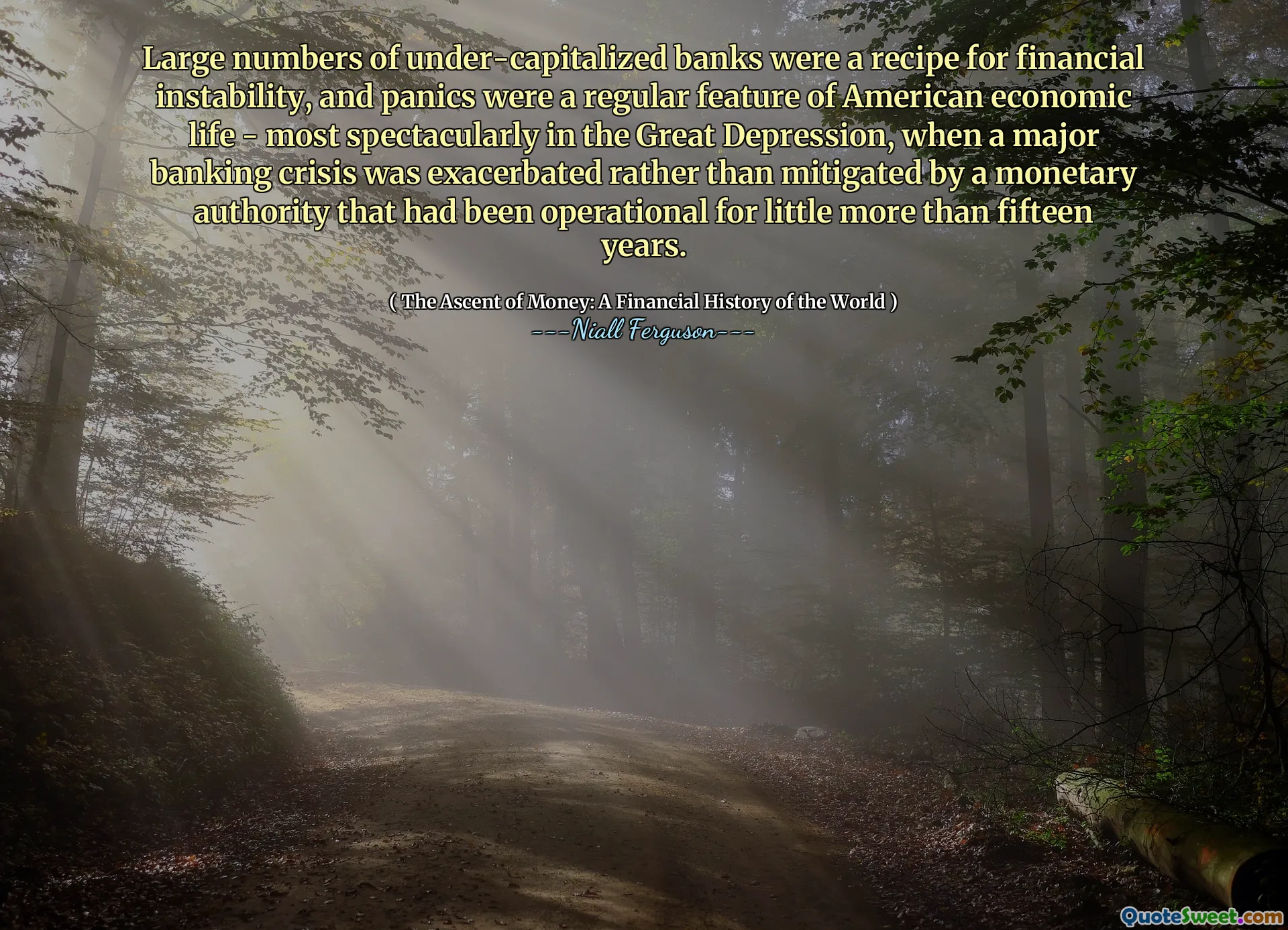
Large numbers of under-capitalized banks were a recipe for financial instability, and panics were a regular feature of American economic life - most spectacularly in the Great Depression, when a major banking crisis was exacerbated rather than mitigated by a monetary authority that had been operational for little more than fifteen years.
In his book "The Ascent of Money: A Financial History of the World," Niall Ferguson discusses the vulnerabilities of under-capitalized banks in America, which often led to financial instability and crises. These issues were particularly prominent during the Great Depression, a period marked by severe economic turmoil and widespread banking failures.
Ferguson points out that the inadequacy of banks' capital contributed to regular financial panics, reflecting a systemic weakness in the banking sector. The situation was made worse by the fact that the monetary authority at the time was relatively new and ill-equipped to handle such a significant crisis, further complicating the already precarious economic landscape.











